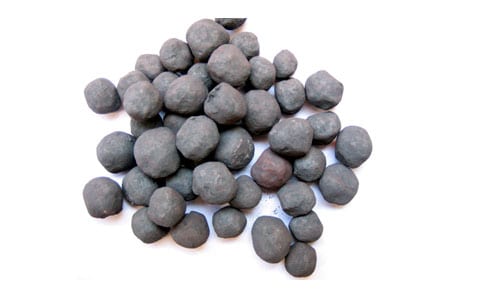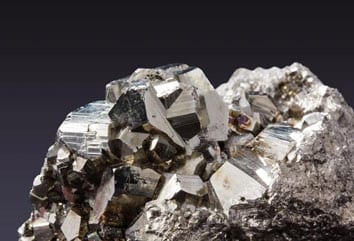Teua lugha:
Iron ore is the fourth most common element in the earth’s crust. Iron is essential to steel manufacturing and, therefore, an essential material for global economic development. Chuma ni pia sana kutumika katika ujenzi na uzalishaji wa magari. Most iron ore resources are composed of metamorphosed banded iron formations (BIWAPO), ambapo chuma ni kawaida kupatikana katika mfumo wa Oksidi, hydroxides, na, to a lesser extent, carbonates.
The chemical composition of iron ores is apparent to be wide, especially for Fe content and associated gangue minerals. Major iron minerals associated with most iron ores are hematite, goethite, limonite, and magnetite. Uchafu kuu katika ores chuma ni SiO2 na Al2O3. The typical silica and alumina-bearing minerals present in iron ores are quartz, Wilaya ya kaolinite, gibbsite, diaspore, na corundum. Ya haya, it is often observed that quartz is the main silica-bearing mineral, and kaolinite and gibbsite are the two main alumina-bearing minerals.


Iron ore extraction is mainly performed through open pit mining operations, kusababisha tailings kubwa kizazi. Mfumo wa uzalishaji wa chuma ore kawaida unahusisha hatua tatu: Madini, Usindikaji, and pelletizing activities. Processing ensures that an adequate iron grade and chemistry are achieved prior to the pelletizing stage. Usindikaji ni pamoja na kusagwa, Uainishaji, Milling, and concentration, with the aim of increasing the iron content while reducing the amount of gangue minerals. Each mineral deposit has its own unique characteristics with respect to iron and gangue-bearing minerals, and therefore, it requires a different concentration technique.
Magnetic separation is typically used in high-grade iron ore beneficiation, where the dominant iron minerals are ferro and paramagnetic. Mvua na kavu ya chini ya kiwango cha magnetic kujitenga (LIMS) techniques are used to process ores with strong magnetic properties, such as magnetite, while wet high-intensity magnetic separation is used to separate the Fe-bearing minerals with weak magnetic properties, such as hematite, from gangue minerals. Iron ores such as goethite and limonite are commonly found in tailings and do not separate very well by either technique.

Flotation ni kutumika kupunguza maudhui ya uchafu wa chini-daraja chuma ores. Chuma ores inaweza kujilimbikizia ama kwa anionic flotation moja ya chini ya chuma Oksidi au reverse cationic flotation ya silika; however, reverse cationic flotation remains the most popular flotation route used in the iron industry. The use of flotation is limited by the cost of reagents, the presence of silica and alumina-rich slimes, and the presence of carbonate minerals. Aidha, flotation requires wastewater treatment and the use of downstream dewatering for dry final applications.
The use of flotation for the concentration of iron also involves desliming, as floating in the presence of fines results in decreased efficiency and high reagent costs. Desliming ni muhimu hasa kwa ajili ya kuondolewa kwa alumina kama utengano wa gibbsite kutoka hematite au goethite kwa mawakala wowote wa uso-hai ni vigumu kabisa. Most alumina-bearing minerals occur in the finer size range (<20Umm), kuruhusu kuondolewa kwa njia ya desliming. Jumla, ukolezi juu ya faini (<20Umm) na alumina huongeza kipimo cha ushuru wa cationic kinachohitajika na kupungua kwa kasi. Basi, desliming increases flotation efficiency but results in a large volume of tailings and in loss of iron to the tailings stream.
Kavu usindikaji wa ore chuma inatoa fursa ya kuondoa gharama na tailings kizazi cha mvua kuhusishwa na flotation na mvua ya kujitenga na magnetic nyaya. STET has evaluated several iron ore tailings and run-of-mine ore samples at bench scale (uwezekano kipimo kabla ya). Kubwa harakati ya chuma na silshabaab ilikuwa aliona, na mifano iliyooneshwa katika jedwali hapa chini.

Matokeo ya utafiti huu ulionyesha kuwa faini ya chini ya chuma ore inaweza kuboreshwa kwa njia ya STET. Kulingana na uzoefu wa STET, ahueni bidhaa na/au daraja kwa kiasi kikubwa kuboresha katika usindikaji wa majaribio kiwango, ikilinganishwa na kifaa cha mtihani wa benchi-kipimo itatumika wakati wa majaribio haya ya chuma ore.
The STET dry electrostatic Utengano mzuri wa madini ya chuma process offers many advantages over traditional wet processing methods, kama vile magnetics au flotation, Ikijumuisha:
Contact us to learn more about dry processing of iron ore.
Marejeo:
Iron ore beneficiation involves a series of processes that aim to improve the purity and quality of raw iron ore. These processes include crushing, Kusaga, Utengano wa Magnetic, flotation, and gravity separation, depending on the mineralogical characteristics of the ore. Each technique is selected based on the ore’s composition and feasibility to extract the maximum amount of iron while minimizing impurities.
Iron ore mining requires specialized equipment to handle the extraction and processing of ore. Common machinery includes ball mills for grinding, crushers for reducing the size of ore, magnetic separators for separating iron particles from impurities, flotation machines for fine particle separation, and conveyors for transport.
Technologies utilized for iron ore beneficiation include advanced techniques such as dry electrostatic separation, flotation, advanced gravity separation, and sensor-based sorting. These technologies aim to efficiently increase the iron content and eliminate contaminants, catering to the growing demand for high-grade iron ore and promoting sustainable mining practices.
The cost of iron ore beneficiation can vary significantly depending on the specific processes and technologies used, the grade of the raw ore, and the desired purity of the final product. It encompasses capital expenditure (KAPEX), such as equipment and plant construction, and operational expenditure (OPEX), including labor, Nishati, na matumizi. It’s essential for companies to evaluate these costs against prospective revenue and market demands to ensure project viability.